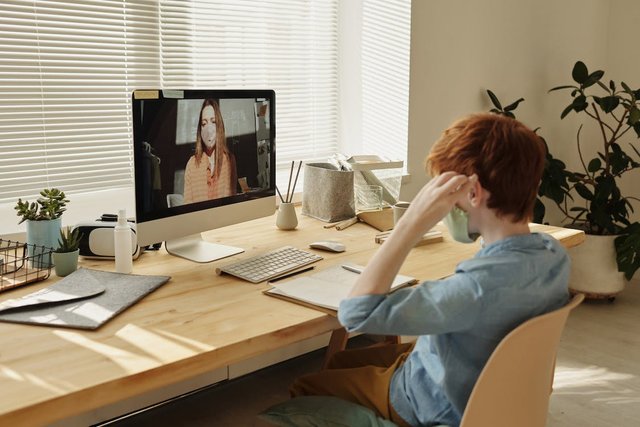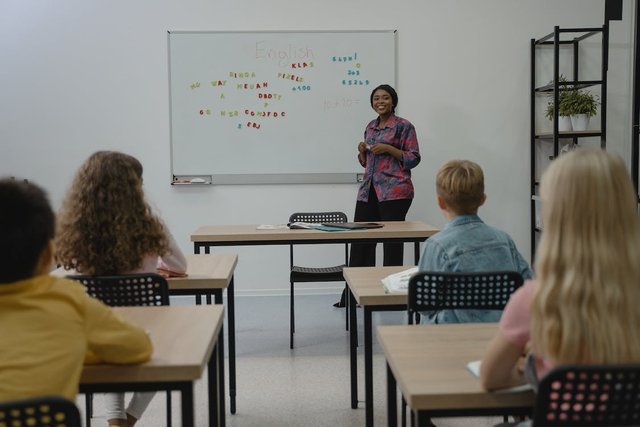Here are some examples of how social media might be applied to online education:
Communication:
Through private messaging, email, and chat groups, social media platforms can be utilized to facilitate communication between students and teachers. This makes it possible to communicate quickly and easily, which is crucial in an atmosphere where students and professors may not be physically present in the same place.
Collaboration:
In virtual study groups, where students may exchange materials, work together on group projects, and interact in real-time, social media tools like Google Docs and Trello can be used.
Access to Information:
Sharing instructional resources like presentations, articles, and videos can be done on social media sites. Lecture recordings, tutorials, and other instructional materials can be shared on websites like YouTube and Slideshare, making it simple for students to access course materials at their convenience.
Building Communities:
Social media can be used to create learning communities, which can promote engagement and a sense of belonging. Platforms like discussion boards and forums can be used to set up areas where students can interact and exchange ideas, which can boost participation and foster a feeling of community.
Gamification:
By including game-play components, social media platforms can be leveraged to develop interactive and captivating learning experiences. For instance, educators can design interactive tests and activities that the whole class can play using tools like Kahoot or Quizlet Live. Students may find learning more enjoyable and interesting as a result.
Parental Involvement:
Social media tools, like ClassDojo and Seesaw, can be utilized to keep parents updated on their children's academic progress. Updates, notifications, and details about a child's development are available to parents, which can promote a more supportive and collaborative learning environment.
Adaptive Learning:
Social networking sites like ALEKS and Khan Academy are just two examples of how they may be leveraged to offer flexible learning opportunities. These platforms make use of data and analytics to offer students individualised learning opportunities that are catered to their specific needs.
Virtual Field Trips:
Students can go on virtual field trips using social media tools like Google Earth and Street View, which let them travel the world without ever leaving the classroom. This might be especially helpful for kids who may not have the opportunity to travel for field trips because they live in remote or rural areas.
Professional Development:
Social networking sites like LinkedIn and Twitter are just two examples of how they can be used for professional advancement. Teachers can interact with other educators, exchange materials and concepts, and take part in online opportunities for professional development.
Feedback and Assessment:
Social media can be used to collect feedback from students and evaluate their learning, for example, by using online tests, polls, and surveys. This enables greater assessment flexibility and can aid teachers in understanding the development of their students.
However, it's also crucial to take into account any prospective difficulties and disadvantages of utilizing social media for e-learning. For instance, social media can distract students and make it difficult to protect their privacy and safety. Furthermore, not all students have equal access to technology and the internet, so teachers must be aware of these differences and take action to guarantee that all students have the tools necessary to fully engage in online learning.
While social media can be a useful tool for e-learning, it's crucial to make sure that its application is in line with the general goals and objectives of the course. It's necessary to take into account the potential risks and difficulties associated with using social media, such as online abuse, cyberbullying, and distraction. As educators, it's crucial to establish and uphold rules and policies about the proper use of social media in the classroom and to teach students digital literacy skills that will enable them to behave responsibly and safely online.
Overall, if used carefully and properly, social media can be a useful tool for increasing e-learning. It can give kids access to learning resources, encourage interaction and teamwork, and foster a feeling of community among students and teachers.


Thank you, friend!


I'm @steem.history, who is steem witness.
Thank you for witnessvoting for me.
please click it!
(Go to https://steemit.com/~witnesses and type fbslo at the bottom of the page)
The weight is reduced because of the lack of Voting Power. If you vote for me as a witness, you can get my little vote.
Downvoting a post can decrease pending rewards and make it less visible. Common reasons:
Submit